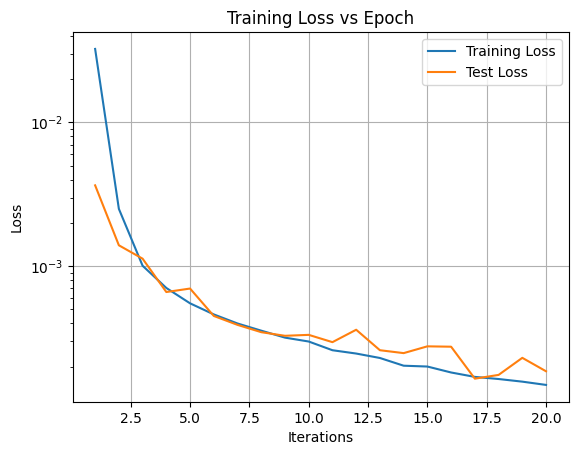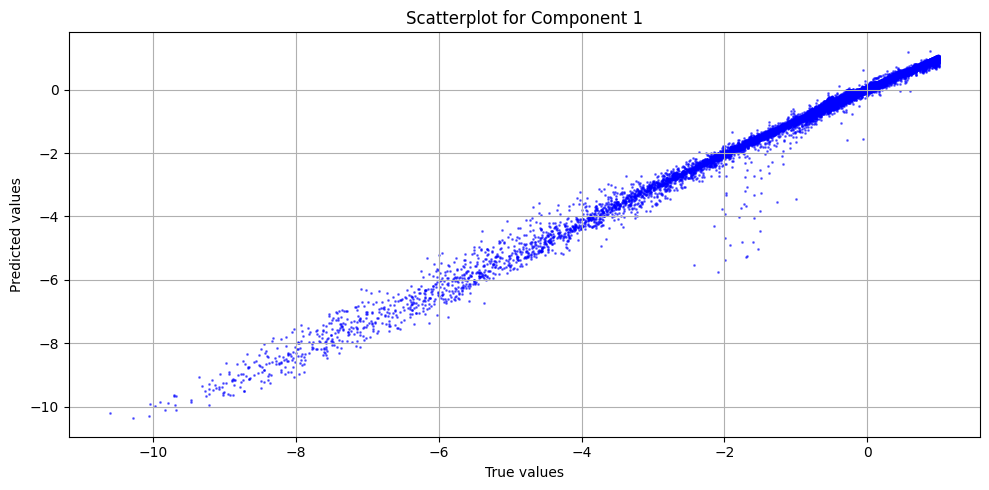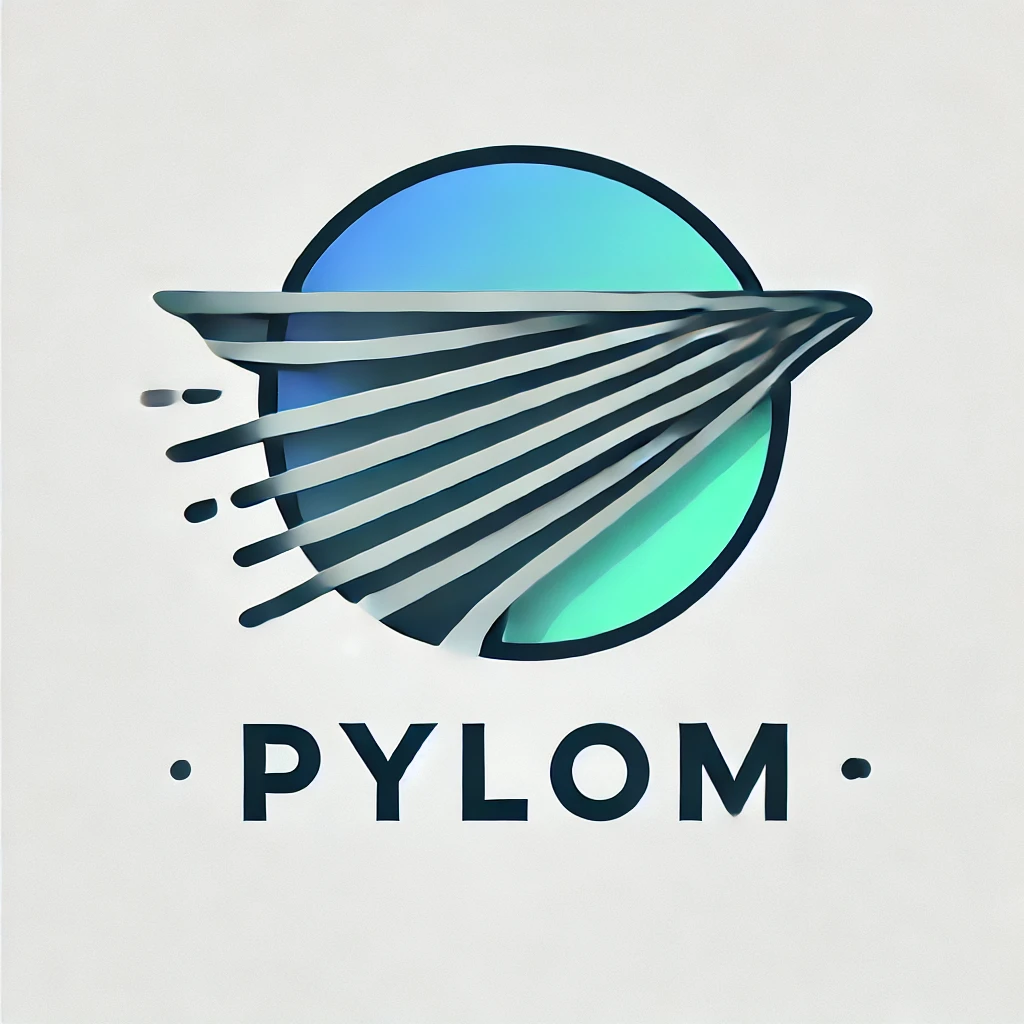How to train an KAN using the Pipeline#
Import classes and define paths#
[1]:
from pyLOM import NN
from pathlib import Path
import torch
import warnings
warnings.filterwarnings("ignore")
0 Warning! Import - NVTX not present!
/home/david/miniconda/envs/pruebasphinx/lib/python3.11/site-packages/tqdm/auto.py:21: TqdmWarning: IProgress not found. Please update jupyter and ipywidgets. See https://ipywidgets.readthedocs.io/en/stable/user_install.html
from .autonotebook import tqdm as notebook_tqdm
WARNING: All log messages before absl::InitializeLog() is called are written to STDERR
E0000 00:00:1742310863.229104 34093 cuda_dnn.cc:8310] Unable to register cuDNN factory: Attempting to register factory for plugin cuDNN when one has already been registered
E0000 00:00:1742310863.234553 34093 cuda_blas.cc:1418] Unable to register cuBLAS factory: Attempting to register factory for plugin cuBLAS when one has already been registered
[2]:
DATA_DIR = Path.cwd().parent.parent.parent.parent / "Testsuite/DATA"
CASE_DIR = Path.cwd() / "results"
NN.create_results_folder(CASE_DIR / 'models')
NN.create_results_folder(CASE_DIR / 'hyperparameters')
NN.create_results_folder(CASE_DIR / 'plots')
Folder already exists: /home/david/Desktop/pyLowOrder/docs/source/notebook_examples/NN/results/models
Folder already exists: /home/david/Desktop/pyLowOrder/docs/source/notebook_examples/NN/results/hyperparameters
Folder already exists: /home/david/Desktop/pyLowOrder/docs/source/notebook_examples/NN/results/plots
Define scalers if needed#
Here, we create 2 minmax scalers, one for scaling the inputs, and other for the outputs. They will be passed to the dataset and the data will be automatically scaled
[3]:
input_scaler = NN.MinMaxScaler()
output_scaler = NN.MinMaxScaler()
Create datasets#
For this example, a dataset of airfoils generated with XFoil is used. As inputs, the model will receive the x and y coordinates of a point of the airfoil, the Reynolds number and the angle of attack; and the output will be the cp on that point
[4]:
dataset = NN.Dataset.load(
DATA_DIR / 'AIRFOIL.h5',
field_names=["cp"],
add_mesh_coordinates=True,
variables_names=["AoA", "Re"],
inputs_scaler=input_scaler,
outputs_scaler=output_scaler,
)
train_dataset, test_dataset = dataset.get_splits_by_parameters([0.8, 0.2])
After creating the datasets, we can see the shape of the tensors
[5]:
x, y = train_dataset[:]
print("\tTrain dataset length: ", len(train_dataset))
print("\tTest dataset length: ", len(test_dataset))
print("\tX, y train shapes:", x.shape, y.shape)
Train dataset length: 27720
Test dataset length: 6831
X, y train shapes: torch.Size([27720, 4]) torch.Size([27720, 1])
Model creation#
Now, the only thing left is creating the model. For this example we are using a KAN
[6]:
training_params = {
"epochs": 20,
"lr": 1e-5,
'lr_gamma': 0.95,
'lr_scheduler_step': 10,
'batch_size': 8,
"print_eval_rate": 1,
"optimizer_class": torch.optim.Adam,
"lr_kwargs":{
"gamma": 0.95,
"step_size": 3 * len(train_dataset) // 8 # each 3 epochs
},
"max_norm_grad": 0.5,
"save_logs_path":str(CASE_DIR),
}
We can train the model on a GPU to speed up the training. pyLOM can detect if a GPU is available with ´NN.DEVICE´, that will select the fist GPU. If many GPUs are available, the device can be define with device = cuda:i where i is the index of the GPU
[7]:
device = NN.DEVICE
[8]:
model = NN.KAN(
input_size=x.shape[1],
output_size=y.shape[1],
hidden_size=31,
n_layers=3,
p_dropouts=0.0,
layer_type=NN.ChebyshevLayer,
model_name="kan_example_xfoil",
device=device,
degree=7
)
Creating model KAN: kan_example_xfoil
input_size: 4
output_size: 1
n_layers: 3
hidden_size: 31
layer_type: <class 'pyLOM.NN.architectures.kan.ChebyshevLayer'>
p_dropouts: 0.0
device: cpu
total_size (trained params): 24304
Run the pipeline#
[9]:
pipeline = NN.Pipeline(
train_dataset=train_dataset,
test_dataset=test_dataset,
model=model,
training_params=training_params,
)
training_logs = pipeline.run()
TRAINNING MODEL kan_example_xfoil
Conditions:
epochs: 20
batch size: 2**3
optimizer class: <class 'torch.optim.adam.Adam'>
scheduler: StepLR
loss_fn: MSELoss()
save_path: /home/david/Desktop/pyLowOrder/docs/source/notebook_examples/NN/results
Scheduler conditions:
gamma: 0.95
step_size: 10395
Epoch 1/20, Train Loss: 3.2465e-02, Test Loss: 3.6504e-03, LR: 1.00e-05
Epoch 2/20, Train Loss: 2.5051e-03, Test Loss: 1.3975e-03, LR: 1.00e-05
Epoch 3/20, Train Loss: 1.0072e-03, Test Loss: 1.1278e-03, LR: 9.50e-06
Epoch 4/20, Train Loss: 7.0540e-04, Test Loss: 6.6096e-04, LR: 9.50e-06
Epoch 5/20, Train Loss: 5.5156e-04, Test Loss: 6.9895e-04, LR: 9.50e-06
Epoch 6/20, Train Loss: 4.6177e-04, Test Loss: 4.5064e-04, LR: 9.03e-06
Epoch 7/20, Train Loss: 3.9933e-04, Test Loss: 3.9053e-04, LR: 9.03e-06
Epoch 8/20, Train Loss: 3.5597e-04, Test Loss: 3.4745e-04, LR: 9.03e-06
Epoch 9/20, Train Loss: 3.1841e-04, Test Loss: 3.2785e-04, LR: 8.57e-06
Epoch 10/20, Train Loss: 2.9913e-04, Test Loss: 3.3283e-04, LR: 8.57e-06
Epoch 11/20, Train Loss: 2.6019e-04, Test Loss: 2.9614e-04, LR: 8.57e-06
Epoch 12/20, Train Loss: 2.4673e-04, Test Loss: 3.6127e-04, LR: 8.15e-06
Epoch 13/20, Train Loss: 2.2978e-04, Test Loss: 2.6023e-04, LR: 8.15e-06
Epoch 14/20, Train Loss: 2.0308e-04, Test Loss: 2.4842e-04, LR: 8.15e-06
Epoch 15/20, Train Loss: 2.0037e-04, Test Loss: 2.7692e-04, LR: 7.74e-06
Epoch 16/20, Train Loss: 1.8216e-04, Test Loss: 2.7529e-04, LR: 7.74e-06
Epoch 17/20, Train Loss: 1.6976e-04, Test Loss: 1.6500e-04, LR: 7.74e-06
Epoch 18/20, Train Loss: 1.6407e-04, Test Loss: 1.7524e-04, LR: 7.35e-06
Epoch 19/20, Train Loss: 1.5729e-04, Test Loss: 2.3034e-04, LR: 7.35e-06
Epoch 20/20, Train Loss: 1.4926e-04, Test Loss: 1.8573e-04, LR: 7.35e-06
Printing losses on path /home/david/Desktop/pyLowOrder/docs/source/notebook_examples/NN/results
To save the model:
[10]:
model.save(path=str(CASE_DIR / "models"))
Show plots#
[11]:
import matplotlib.pyplot as plt
import numpy as np
def true_vs_pred_plot(y_true, y_pred):
"""
Auxiliary function to plot the true vs predicted values
"""
num_plots = y_true.shape[1]
plt.figure(figsize=(10, 5 * num_plots))
for j in range(num_plots):
plt.subplot(num_plots, 1, j + 1)
plt.scatter(y_true[:, j], y_pred[:, j], s=1, c="b", alpha=0.5)
plt.xlabel("True values")
plt.ylabel("Predicted values")
plt.title(f"Scatterplot for Component {j+1}")
plt.grid(True)
plt.tight_layout()
plt.show()
def plot_train_test_loss(train_loss, test_loss):
"""
Auxiliary function to plot the training and test loss
"""
plt.figure()
plt.plot(range(1, len(train_loss) + 1), train_loss, label="Training Loss")
total_epochs = len(test_loss) # test loss is calculated at the end of each epoch
total_iters = len(train_loss) # train loss is calculated at the end of each iteration/batch
iters_per_epoch = total_iters // total_epochs
plt.plot(np.arange(iters_per_epoch, total_iters+1, step=iters_per_epoch), test_loss, label="Test Loss")
plt.xlabel("Iterations")
plt.ylabel("Loss")
plt.title("Training Loss vs Epoch")
plt.yscale("log")
plt.legend()
plt.grid()
plt.show()
[12]:
plot_train_test_loss(training_logs['train_loss'], training_logs['test_loss'])

[13]:
preds = model.predict(train_dataset, batch_size=250)
scaled_preds = output_scaler.inverse_transform([preds])[0]
scaled_y = output_scaler.inverse_transform([train_dataset[:][1]])[0]
true_vs_pred_plot(scaled_y, scaled_preds)

Evaluate the model with some metrics#
[14]:
evaluator = NN.RegressionEvaluator()
evaluator(scaled_y, scaled_preds)
evaluator.print_metrics()
Regression evaluator metrics:
mse: 0.0198
rmse: 0.1406
mae: 0.0645
mre: 116.0480%
ae_95: 0.2076
ae_99: 0.5622
r2: 0.9899
l2_error: 0.0915
As you can see, this example is very similar that the one with the MLP, it just changes the model definition. This shows the power of pyLOM when training different models
